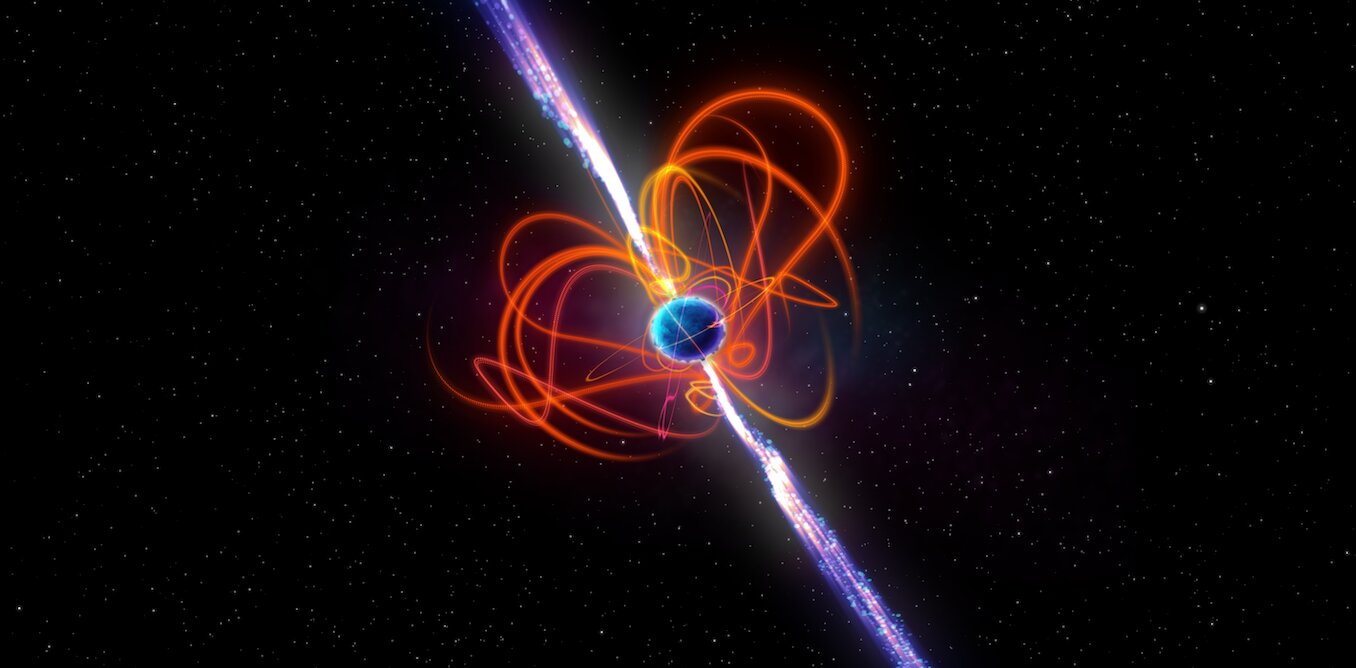Scientists have found signals coming to us with a frequency of 22 minutes. Moreover, this has been happening for 30 years. One of the possible variants of what generates them is a magnetar with a record-breaking pulsation period.

Surprising radio signals
Scientists working with the Very Large Array and the Murchison Widefield Array, two huge fields of radio antennas, have published an article in which they describe an amazing source of a radio signal, the nature of which they cannot yet unambiguously determine, despite the fact that they first discovered it during observations in 2020.
At first, the radiation source GPM J1839-10 was classified as transient. This is the name of events that occur only once, last for a few seconds, minutes or hours, and then disappear forever. The duration of the new object’s activity of 30 seconds was well within this framework.
But the signal was repeated the same night after about 22 minutes and then recorded with the same frequency. Pulsating signals are not uncommon in space, but they usually occur at a much higher frequency.
33 years of observations
In order to understand what the source of radiation is, scientists decided to see if something similar had been recorded in this area of the sky before. And they were surprised to find the same signal at the same point in the recordings made back in 2018. It was then that they made the assumption that a magnetar with an incredibly long period could generate pulses.
Moreover, when scientists checked the recordings made using the Very Large Array, they found the same pulses in the recordings that were made back in 1988, when this radio telescope was just starting work. That is, people have been registering them for 33 years, but because of the long period, they did not pay attention to them.
What is the new object?
Most of all, the object that sends signals attracts attention to their exact frequency. They occur every 1,318.1957 seconds. Scientists are well aware of the class of objects that so accurately “adhere to the schedule”. These are pulsars and magnetars, two types of neutron stars that spin, but they do it 1,000 times faster than GPM J1839-10.
Actually, scientists suspected that this was a magnetar even when they discovered the frequency of GPM J1839-10. Previously, similar objects with an ultra-long period have already been discovered, including the same group. However, previously repeated pulses were observed for only a few months, after which the source always disappeared.
But in the case of GPM J1839-10, observations have been going on for 33 years. Scientists continue to argue about what this source is, but a version with a magnetar located at a distance of 15 thousand light-years from us is possible. As for possible alien signals, scientists quite reasonably reject this idea.
According to phys.org
Follow us on Twitter to get the most interesting space news in time
https://twitter.com/ust_magazine
